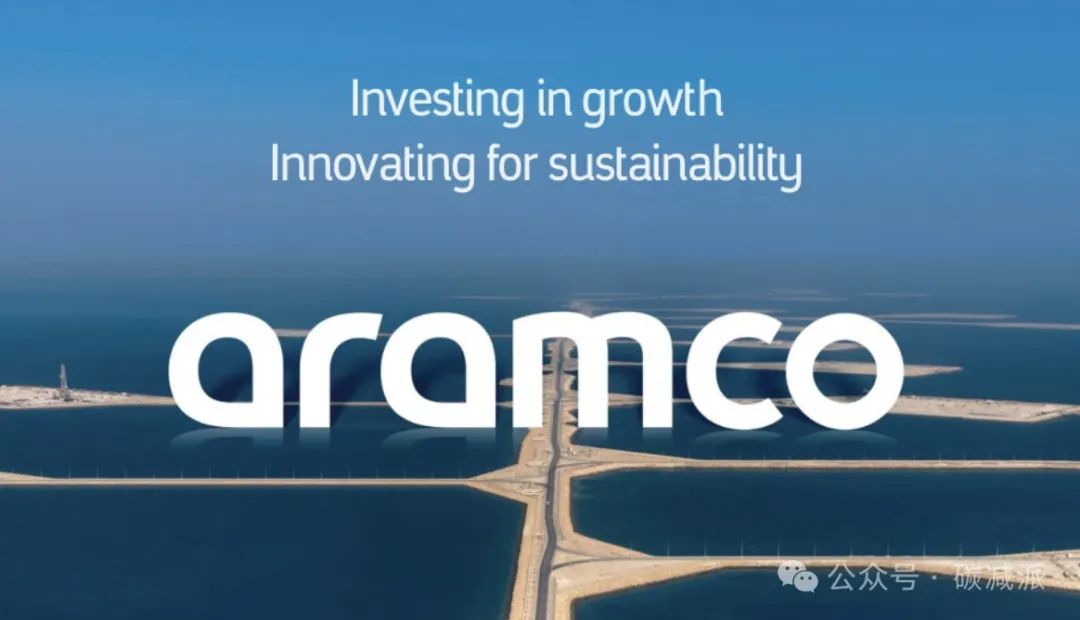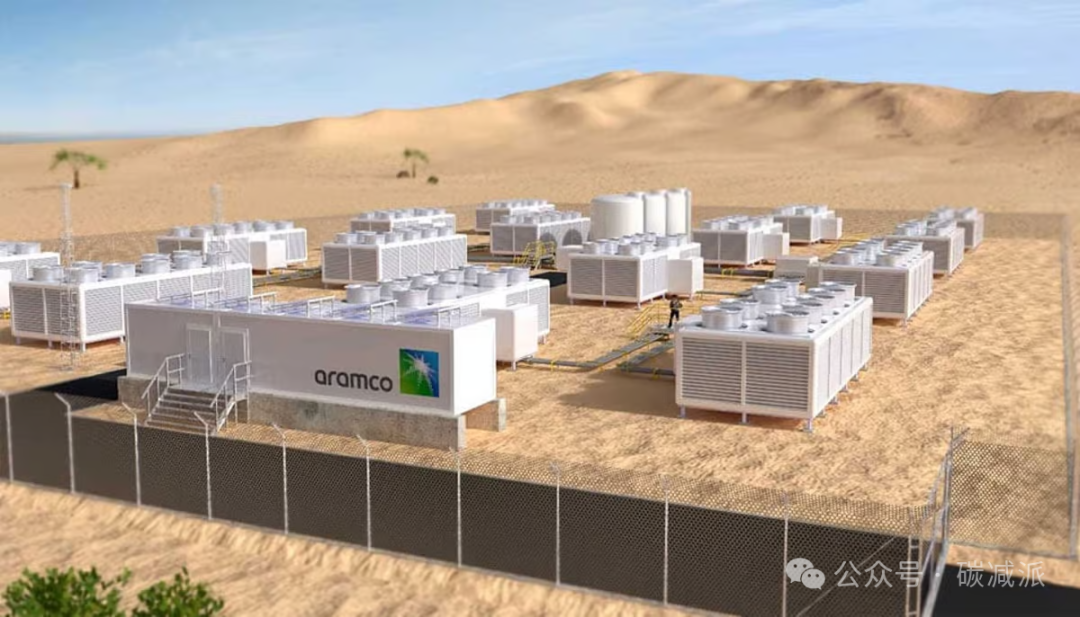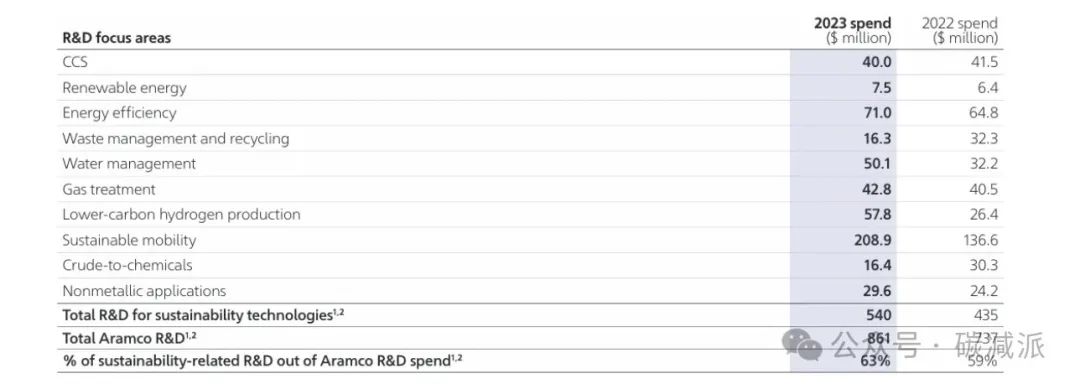Carbon Reduction is committed to providing timely information on the global carbon market and policy interpretations; the mini-program 【Daily Carbon Price】 publishes mandatory and voluntary market trends; video channels share cutting-edge projects such as DAC/CCUS from both domestic and international perspectives; an international information channel that carbon circle professionals pay attention to.

As a leading enterprise in the energy and chemical sectors, Saudi Aramco is taking a series of pioneering initiatives to lead Saudi Arabia towards its net-zero emissions target by 2060. Recently, Saudi Aramco, in collaboration with Siemens Energy, launched Saudi Arabia’s first Direct Air Capture (DAC) testing facility, injecting new momentum into the development of carbon capture technology and laying the foundation for a sustainable future in Saudi Arabia.
The DAC testing facility launched through this collaboration can remove 12 tons of carbon dioxide from the atmosphere each year. Although the scale is still small, it marks a breakthrough for Saudi Arabia in the field of DAC technology and is a key step in Saudi Aramco’s carbon capture strategy. Through this facility, Saudi Aramco will test advanced carbon capture materials suitable for the local climate, aiming to reduce costs and promote the widespread application of DAC technology in Saudi Arabia and globally. In the future, Saudi Aramco plans to expand this technology to larger-scale projects, paving the way for more ambitious emission reduction goals.

Meshari, Senior Vice President of Technology Oversight and Coordination at Saudi Aramco, stated: “The technology for capturing carbon dioxide directly from the air is likely to play a significant role in reducing greenhouse gas emissions in the future, especially in hard-to-abate industries. The testing facility launched by Aramco is a key step in scaling up viable DAC systems, which will be deployed in the Kingdom of Saudi Arabia and other regions. In addition to helping address emissions issues, the carbon dioxide extracted through this process can also be used to produce more sustainable chemicals and fuels.”
In fact, Saudi Aramco’s layout in the field of carbon capture goes far beyond this. Its wholly-owned assets have set a net-zero emissions target for Scope 1 and Scope 2 by 2050 and are taking action in five key areas:
Saudi Aramco is comprehensively advancing its carbon capture strategy, fully committed to achieving net-zero emissions for Scope 1 and Scope 2 by 2050, focusing on five key areas:
1. Energy Efficiency Improvement: Committed to optimizing oil and gas operations, reducing waste, and using digital tools and artificial intelligence to accurately track energy usage and enhance efficiency. Since 2000, the energy management program has reduced emissions by 31.43 million metric tons of CO2 equivalent, with a goal of reducing an additional 7 million tons annually through energy-saving measures.
2. Combustion and Methane Emission Reduction: Actively investing in advanced sensors and satellite monitoring technologies to quickly locate and repair methane leaks, reducing combustion and methane emissions. In 2023, 8.9 billion standard cubic feet of flare gas was recovered, effectively avoiding unnecessary emissions. The company’s methane and combustion intensity are among the lowest in the global energy industry, with upstream methane emissions still declining by 5.1% against the backdrop of increased natural gas production.
3. Carbon Capture and Storage (CCS): Positioning CCS as a core means of emission reduction, preparing for large-scale projects with a target of storing 14 million tons of CO2 equivalent by 2035. The Jubail CCS Center is a key project, expected to capture 9 million tons of CO2 annually starting in 2027, helping Saudi Arabia achieve its goal of capturing 44 million tons of CO2 equivalent annually by 2035.
4. Expanding Renewable Energy Investments: Accelerating energy diversification, significantly investing in solar and wind energy, and exploring geothermal energy. Plans include developing 12 GW of solar and wind energy by 2030, with a 1.5 GW solar project fully operational by 2024, setting a regional benchmark while continuously investing in research to enhance the economics and efficiency of renewable energy.
5. Nature-Based Climate Solutions: Absorbing carbon dioxide through biological means such as mangrove planting and algae farming, with third-party research showing that the mangrove project has absorbed 445,000 tons. Additionally, actively engaging in high-quality carbon offset projects to balance emissions from hard-to-abate industries, contributing multidimensionally to achieving carbon neutrality goals.
Saudi Aramco’s relevant layout

(Image source: Saudi Aramco Sustainability Report)
Especially in points 3, 4, and 5 above, Saudi Aramco is ambitious in the field of carbon capture and storage (CCS). The Jubail CCUS Center plans to capture 9 million tons of CO2 annually starting in 2027, with future capacity expected to increase further. The Hawiyah NGL CCS facility captures 45 million standard cubic feet of CO2 daily, transported via an 85-kilometer pipeline to the Uthmaniyah reservoir, achieving a win-win situation for increased production and carbon storage. The mobile carbon capture technology is unique, capable of capturing 25% of carbon dioxide emissions from vehicles and unloading the recovered CO2 at gas stations.
Saudi Aramco is actively embracing renewable energy, planning to develop 12 GW of solar and wind energy by 2030, with a 1.5 GW solar project fully operational by 2024, setting a regional benchmark. At the same time, the company is exploring geothermal energy, striving for energy diversification to further reduce its carbon footprint.
Nature-based climate solutions are a focal point for Saudi Aramco. The mangrove planting and restoration project has absorbed approximately 445,000 tons of CO2, and biological methods such as algae farming have also shown significant results. The company is also engaged in high-quality carbon offset projects to balance emissions from hard-to-abate industries.
The collaboration between Saudi Aramco and Siemens Energy is a milestone in Saudi Arabia’s carbon capture process and a model for global energy companies to collaboratively address climate challenges. It marks a solid step for Saudi Arabia in the path of technological innovation and sustainable development.
Carbon Reduction is committed to providing timely information on the global carbon market and policy interpretations; the mini-program 【Daily Carbon Price】 publishes mandatory and voluntary market trends; video channels share cutting-edge projects such as DAC/CCUS from both domestic and international perspectives; an international information channel that carbon circle professionals pay attention to.